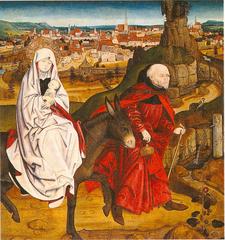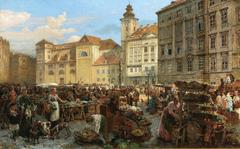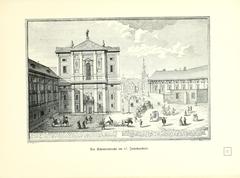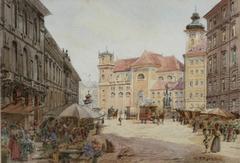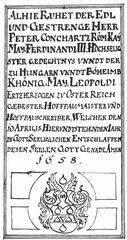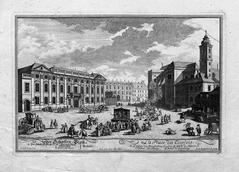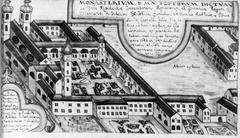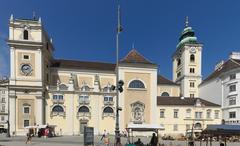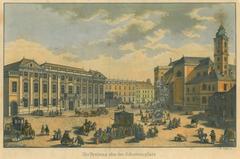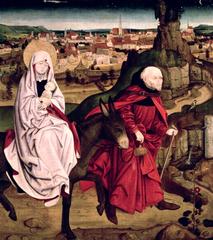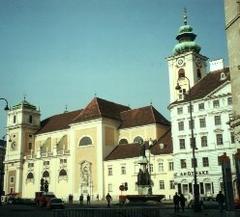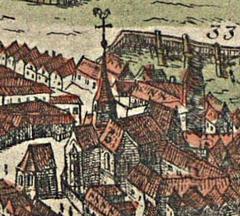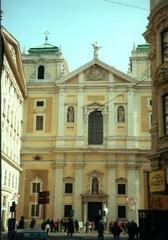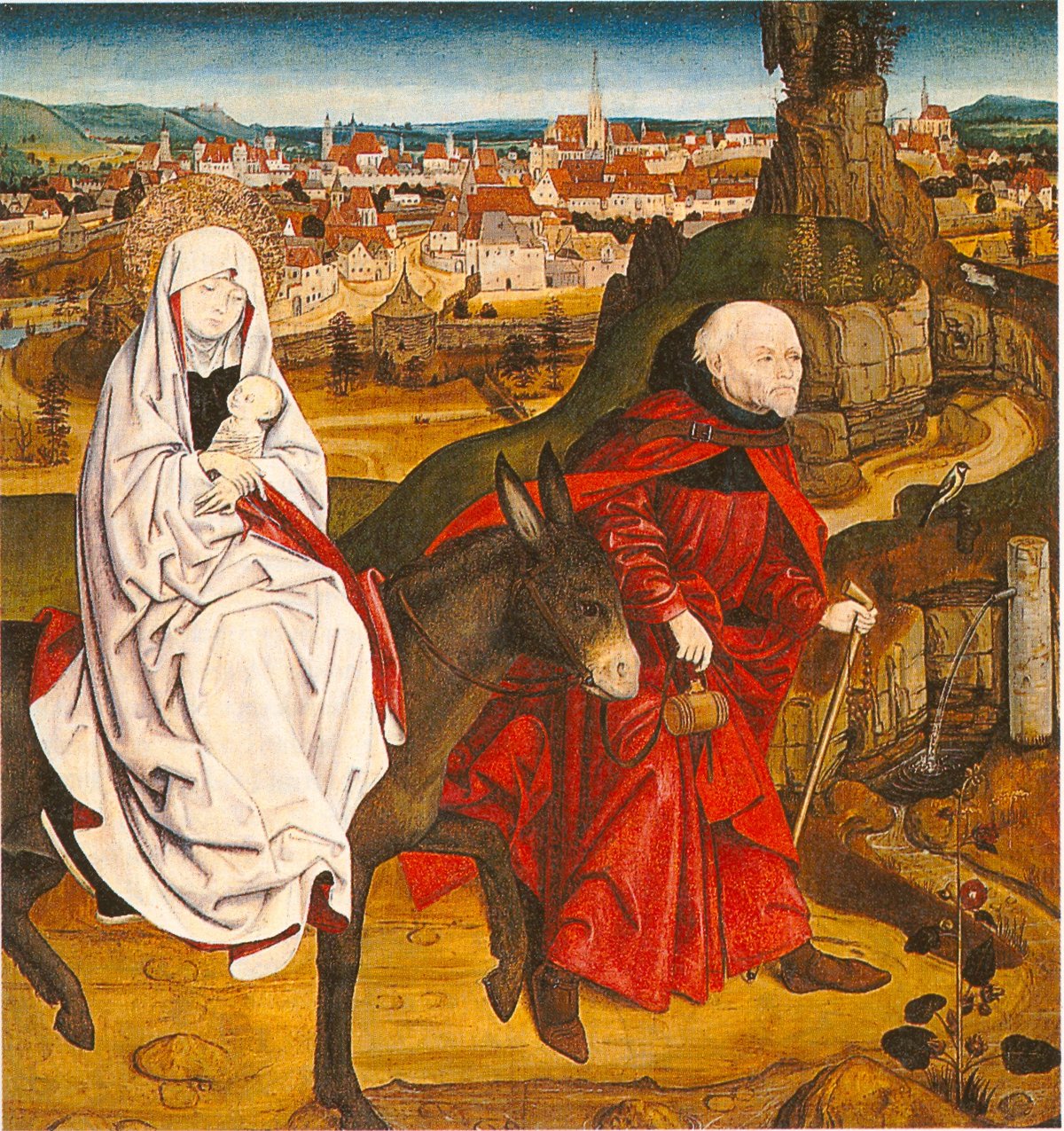
Schottenkirche Vienna: Visiting Hours, Tickets, and Historical Sites Guide
Date: 14/06/2025
Introduction
Situated in Vienna’s historic Innere Stadt, Schottenkirche (Scots Church) is a testament to centuries of religious, cultural, and architectural evolution. Established in the 12th century by Irish Benedictine monks—invited by Duke Heinrich II Jasomirgott—the church and its adjoining Schottenstift Abbey reflect Vienna’s enduring spiritual traditions and artistic heritage (Schottenstift official website). Over time, its architecture has transitioned from Romanesque to Gothic, Baroque, and Neo-Renaissance, encapsulating the city’s layered history (Vienna Unwrapped; Wikipedia).
Schottenkirche remains a living center of worship, education, and culture. Visitors enjoy its frescoed ceilings, gilded altars, stained glass, and a vibrant calendar of concerts and events, all set within the lively Freyung square and near other major Viennese landmarks (Christianedirectory; Delve Into Europe; Visiting Vienna). This guide offers everything you need for a meaningful visit, including up-to-date information on hours, ticketing, accessibility, and travel tips.
Table of Contents
- Introduction
- Historical Overview
- Architectural Features
- Visitor Information
- Artistic and Musical Heritage
- Special Events and Highlights
- The Schottenstift Museum
- Visitor Amenities and Surroundings
- Etiquette and Local Customs
- Practical Tips for a Smooth Visit
- FAQ
- Visuals and Media
- Internal and External Links
- Conclusion
- Call to Action
Historical Overview
Foundation and Early History
Founded in the 12th century, Schottenkirche was established as part of the Schottenstift by Irish Benedictine monks—“Schotten” or “scoti”—to bolster Christianity in Central Europe (Schottenstift official website; Christianedirectory). Duke Heinrich II Jasomirgott’s patronage led to the creation of a monastic hub that produced religious manuscripts and educated future leaders (Visiting Vienna).
Architectural Evolution
Initially built as a Romanesque basilica, Schottenkirche underwent significant transformations:
- Gothic Rebuilding after a 1276 fire and the 1443 earthquake, introducing pointed arches and a new choir.
- Baroque Renovation in the 17th century (after a lightning-induced tower collapse), led by Andrea Allio the Elder & Younger and Silvestro Carlone, adding ornate interior decoration and a distinctive pink side façade (Vienna Unwrapped).
- Neo-Renaissance Restoration (1883–1887), led by Abbot Ernest Hauswirth, unified earlier styles and restored the church’s grandeur (de.wikipedia.org).
Cultural and Religious Significance
Schottenkirche has served as a center for monastic education, art, and worship for centuries. It continues to be a vibrant spiritual hub, hosting daily masses, religious festivals, and classical concerts (Christianedirectory).
Architectural Features
Exterior Architecture
- Facade and Towers: The church’s Baroque facade dominates Freyung square, with intricate sculptures and restrained towers—a result of repeated reconstruction after disasters. Unrealized proposals aimed to heighten the towers, but their modest height remains a signature feature (wanderineurope.com).
- Urban Context: Surrounded by 18th-century urban design and featured in old city paintings, Schottenkirche is an architectural anchor for Freyung and nearby landmarks (wanderineurope.com).
Interior Design and Artistic Elements
- Nave and Vaulting: The church’s barrel-vaulted ceiling and harmonious blend of Neo-Baroque and Neo-Renaissance elements create a sense of verticality and grandeur (de.wikipedia.org).
- Altars and Mosaics: The high altar, designed by Heinrich Ferstel with a Virgin Mary mosaic by Michael Rieser, stands out. While most Baroque altars were replaced in the 19th century, the Benediktus and Gregorius altars preserve earlier styles (wanderineurope.com).
- Frescoes and Stucco: Julius Schmid’s 19th-century ceiling frescoes and elaborate stucco work enhance the interior’s visual richness (wanderineurope.com).
- Romanesque and Gothic Remnants: The Finstere Sakristei (Dark Sacristy) and Romanesque Chapel retain elements from the original church, including Vienna’s oldest Marian statue (ca. 1250). The choir’s Gothic features remain from post-fire and earthquake reconstructions (de.wikipedia.org).
Crypt and Funerary Art
The crypt contains the Neo-Romanesque sarcophagus of Heinrich II Jasomirgott (1901) and the epitaph of Ernst Rüdiger von Starhemberg, a hero of Vienna’s defense against the Turks (de.wikipedia.org).
Lighting and Acoustics
Abundant natural light, stained glass, and excellent acoustics make Schottenkirche a premier venue for concerts and spiritual reflection (delveintoeurope.com).
Visitor Information
Visiting Hours
- Monday–Saturday: 9:00 AM–6:00 PM
- Sunday & Public Holidays: 9:00 AM–7:00 PM
- Note: Hours may vary on religious holidays and during special events; always check the official website before your visit.
Tickets and Admission
- Church Entry: Free (donations appreciated)
- Guided Tours: Available for a fee; book onsite or online via the Schottenstift website.
- Schottenstift Museum: €8 for adults; free with Vienna Pass (Visiting Vienna).
Accessibility
- Wheelchair Access: Ramps at the main entrance; accessible restrooms available.
- Mobility Assistance: Contact in advance for specific needs.
How to Reach Schottenkirche
- Subway: U3 (Herrengasse), U2 (Schottentor)
- Tram: Lines stopping at Schottentor
- Bus: 13A to Schottentor
- Walking: Easily accessible from Graben, Herrengasse, and other central locations (Evendo).
Travel Tips
- Visit early morning or late afternoon for fewer crowds.
- Photography is allowed (no flash/tripods); refrain during services.
- Combine your visit with Freyung market, Hofburg Palace, or Vienna City Hall.
Artistic and Musical Heritage
Schottenkirche hosts regular classical concerts, including performances by the Wiener Franz Liszt Society. The acoustics and Baroque organ make it a venue of choice for music lovers (Vienna Unwrapped).
The Schottenstift Museum
Located adjacent to the church, the Schottenstift Museum features religious art, manuscripts, and monastic artifacts. Entry is €8 for adults (free with Vienna Pass). The museum deepens understanding of the abbey’s historical and cultural role (Visiting Vienna).
Visitor Amenities and Surroundings
Freyung square is surrounded by cafés, restaurants, and boutique shops, creating a charming setting for relaxation before or after your visit (Evendo). Public restrooms are available nearby.
Etiquette and Local Customs
- Maintain silence inside, especially during services
- Dress modestly (shoulders/knees covered)
- Use polite German greetings (“Guten Tag”, “Danke”) (The Invisible Tourist)
- Observe signage regarding photography (The Vienna Blog)
Practical Tips for a Smooth Visit
- Double-check opening hours before arrival
- Plan your itinerary to include nearby attractions
- Keep an eye on personal belongings in busy areas (The Vienna Blog)
- Guided tours provide deeper historical insights
FAQ
Q: What are the visiting hours of Schottenkirche?
A: Monday–Saturday 9:00 AM–6:00 PM; Sunday/Public Holidays 9:00 AM–7:00 PM. Check for changes on holidays.
Q: Is admission free?
A: Yes, entry is free; donations are welcome. Museum and guided tours have a fee.
Q: Is the church wheelchair accessible?
A: Yes, with ramps and accessible restrooms.
Q: Are guided tours available?
A: Yes, book via the official site or onsite.
Q: Can I take photographs inside?
A: Yes, without flash and outside of services.
Visuals and Media
- [Insert high-quality images of the Schottenkirche’s facade, interior frescoes, high altar, and crypt with descriptive alt tags]
- [Embed an interactive map pinpointing the church’s location]
- [Link to virtual tour or official video if available]
Internal and External Links
Conclusion
Schottenkirche is more than a historical monument; it is a living center of spiritual, educational, and cultural activity. Its architectural beauty, layered history, and accessible location make it a must-visit for anyone exploring Vienna. Plan ahead, respect local customs, and enrich your experience by visiting the Schottenstift Museum and participating in concerts or events.
Call to Action
For the latest updates on Schottenkirche’s hours, events, and tours, download the Audiala app. Follow us on social media for exclusive tips and insights, and explore our related articles to make your Vienna journey unforgettable.
References & Further Reading
- Visiting the Schottenkirche in Vienna: History, Tickets, Hours, and Travel Tips, 2024 (Schottenstift official website)
- Exploring Schottenkirche Vienna: Visiting Hours, Tickets, and Architectural Highlights, 2024 (Wikipedia)
- Visiting Schottenkirche: History, Tickets, Hours & Vienna’s Historic Religious Site, 2024 (Vienna.net)
- Visiting Schottenkirche: Your Complete Guide to Vienna’s Historic Gem, 2024 (Evendo)
- Baroque architecture in Vienna, Vienna Unwrapped, 2024 (Vienna Unwrapped)
- Visiting Vienna, 2024 (Visiting Vienna)
- Delve Into Europe: Churches in Vienna, 2024 (Delve Into Europe)
- Wander in Europe: Little Gems in Old Town Vienna, 2024 (Wander in Europe)
- Christianedirectory: Schottenkirche Vienna Austria, 2024 (Christianedirectory)
